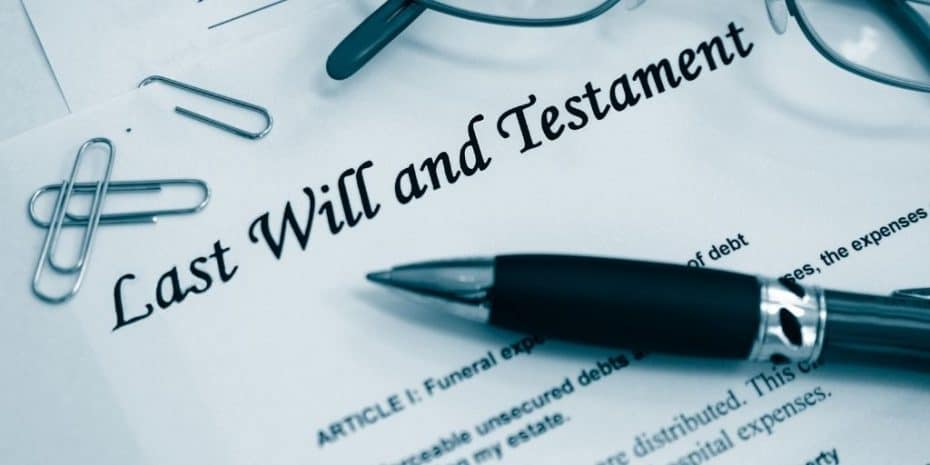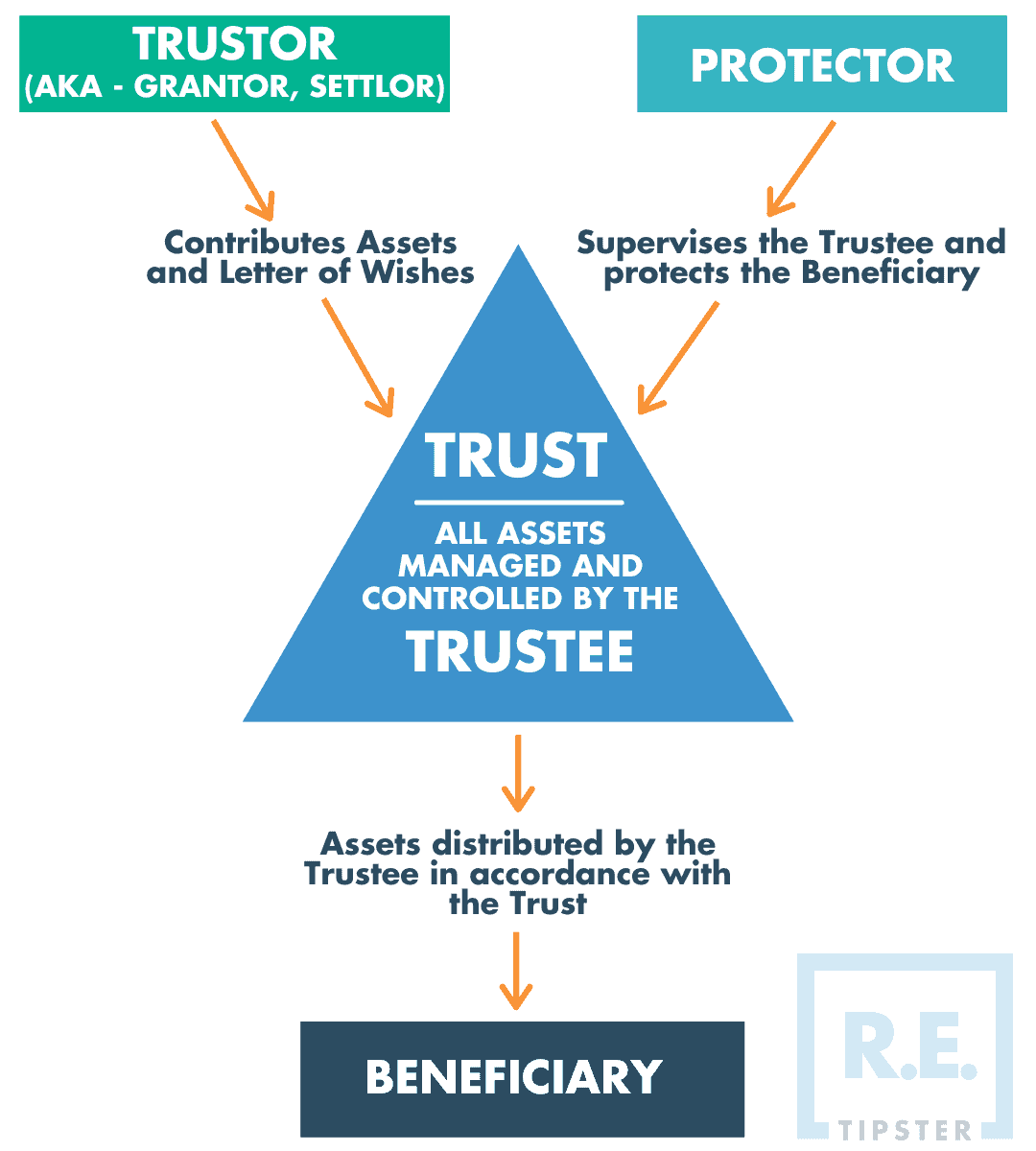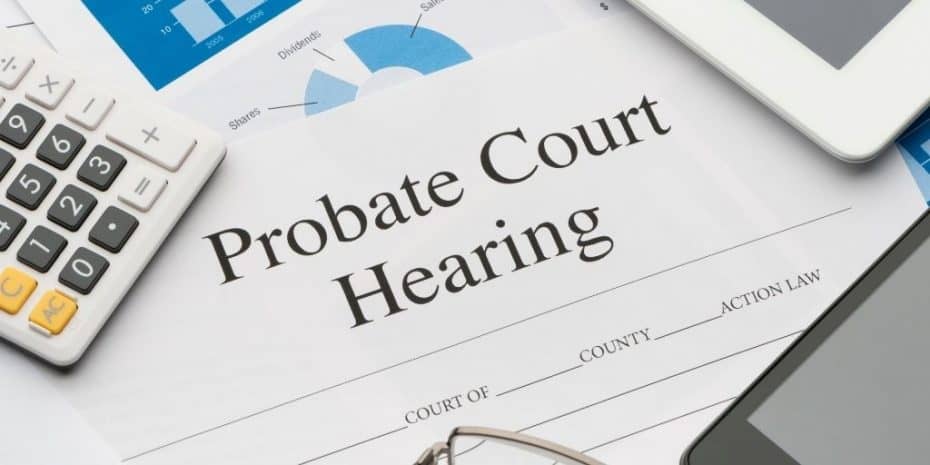
REtipster does not provide legal advice. The information in this article can be impacted by many unique variables. Always consult with a qualified legal professional before taking action.
When you're in the business of buying real estate from highly motivated sellers, you're eventually going to encounter people who want to sell a property they don't own.
I've talked to A LOT of motivated sellers about buying real estate that was owned by their deceased family member(s) – perhaps a parent, grandparent, aunt, or uncle.
In most cases, these individuals started paying the property tax bill or maintaining the property after the original owner passed away and as a result, they assumed that they were the rightful owner of the property simply because they had been doing all the work and treating it like their own.
What they didn't understand was that legally speaking – this didn't entitle them to anything.
If a property is still titled in the name of the original owner and no subsequent paperwork has been completed or filed with the county, there's a good chance that this seller doesn't have a right to sell the property any more than YOU have a right to sell the Empire State Building.
How the Chain of Title Works
For example, let's say you're talking with someone (we'll call them, “Person C”) and they're trying to sell you a property that is technically owned by two dead people (e.g. – their parents, we'll call them “Person A” and “Person B”).
If you understand how the chain of title works, you can't just accept a deed from Person C to yourself and call it good. If the property hasn't previously been deeded to Person C, then any deed they write to you won't be worth the paper it's written on.
The chain of title needs to pass properly from the deceased owner (in this example, Person A and Person B) to the person who wants to sell the property (Person C), and THEN from that individual to yourself. The chain of title CANNOT simply skip over Persons A and B with no mention of how Person C ended up in the driver's seat.
Unless the correct documentation connects the transfer of title from Persons A and B to Person C, Person C has no legal right to sell the property (even if they've been paying the property taxes and taking care of the property for years on end) and without the right documentation, any deed you accept from Person C will be worthless, because they never owned the property in the first place.
Disclaimer: Before we go any further, let me clarify that I am not an attorney and the information below should not be interpreted as legal advice. Every state has different laws and every real estate transaction has unique variables that can affect the processes and documentation listed below. Even though these are the steps and documentation I use in my closings – don't assume this information is fully applicable to your situation. Before you act on anything described below, be sure to consult with an attorney or legal professional in your area to confirm that you're working with the right information, and if needed, hire an attorney or title company to complete the closing for you.
Closing the Documentation Gap
Suppose you are contacted by someone (Person C) who wants to sell you a property that is NOT currently titled in their name. However, it is titled in the name of two deceased persons (Person A and Person B) who intended for Person C to inherit the property after their passing.
In order to give Person C the legal authority to sell this property and sign the deed over to you, you're going to need a few additional documents to create what's known as a “clear chain of title”.
There are a few different scenarios in which this kind of situation can arise, so let's cover the most common ones right here:
- Scenario 1: Person A & Person B left their property to Person C in a Will
- Scenario 2: Person A & Person B left their property to Person C in a Trust
- What is a Trust?
- What Will You Need?
- Which Situation Are You Dealing With?
- Scenario 3: Person A & Person B did not complete a Will or a Trust, and the property has NOT gone through probate
- Scenario 4: Person A & Person B did not complete a Will or a Trust, and the property HAS gone through probate
Scenario 1: Person A and Person B left their property to Person C in a Will
If you're working with a seller who has a Will from Person A and B (explaining that the deceased owners intended for Person C to become the legal owner after their passing), the existence of this will is a good first step in the right direction, but it isn't entirely what you'll need to close the deal.
With this Will in hand, Person C will need to file a petition with the county probate court, requesting permission to sell the property on behalf of Person A and Person B's estate.
With this action, the estate will be opened, and assuming there are no restrictions or contests from other heirs as to the sale of the property (which would be difficult to support, given that Person C has a Will that clearly explains who the intended beneficiary of the property is), the court will issue a document called the “Letters of Administration” (aka – “Letters of Authority” in some states), stating that Person C is the Personal Representative (aka – Executor) and has the authority to sell this property on behalf of the estate.
Once this document is issued, the seller will need to provide you with original copies of the following:
- Death Certificate of Person A
- Death Certificate of Person B
- Letters of Administration/Authority, naming Person C as the “Personal Representative” (or the “Executor”) of the estate
- Deed, signed by the Personal Representative/Executor of the estate
Once these documents have been recorded with the County Recorder (aka – Register of Deeds) and assuming there were no other issues in the title work, you will be the new owner with a clear chain of title!
Scenario 2: Person A and Person B left their property to Person C in a Trust
If you're working with a seller who claims to be the rightful owner of a property because it was left to them in a Trust, this is a great first step, but you're still going to need a few things.
What is a Trust?
A trust is a legal document created by the original property owners (in this case, the ones who have passed away). A trust is not a legal entity and it is not a document that gets recorded by the county.
This document is simply a legal agreement, where the Trustor (also known as a Settlor or Grantor, because they are the original property owner) lays out all the details about what is supposed to happen with their assets after they die.
The benefit of having a trust is that when the Trustor dies, there is no ambiguity about what should happen with their assets. In the event of the Trustor's death, all of their assets and will automatically SKIP the normal probate process (as described in Scenario 1) and go directly into the trust.
What this actually means is that the assets are now controlled by the Trustee.
A Trustee is a person whom the Trustor (i.e. – the deceased property owner) designated to execute the plan as described in the trust. This person is legally obligated to carry out the plan according to what the trust says, for the benefit of the Beneficiaries listed in the trust.
The Beneficiary is whoever the Trustor designated as the person or entity to receive their assets after the Trustor's death.
For example, if Person A & Person B (the Trustors) wanted their car to be given to Person D (the Beneficiary), and Person C was designated as the Trustee… Person C would be under a legal obligation to ensure that title to the car is legally transferred to Person D.
Note: In some cases, there may also be a Protector involved with the Trust. The Protector's role is to watch over the Trustee and terminate the Trustee for any misconduct. Ironically, Trustees cannot always be trusted to carry out the instructions stated in the Trust, and the appointment of a Protector can help ensure the Trust is carried out by the Trustee according to plan.
Make sense?
What Will You Need?
If you're dealing with a property that is owned by two dead people, and the seller (Person C) claims they have the legal right to sell the property, there are three general “sub-scenarios” in which this is possible. Let's talk about what they are, and what needs to happen in each situation:
Sub-Scenario 1: Person C is listed as the Beneficiary of the property, and the trust authorizes the Trustee to transfer the property directly to the Beneficiary.
- In this case, Person C should already be the current owner of record (or if the Trustor(s) just died, the Trustee should be in the process of transferring property ownership to Person C very soon). In this case, all Person C needs to do (once they've received ownership of the property) is creating a new deed and transfer the property to the new buyer.
Sub-Scenario 2: Person C is listed as the Trustee of the Trust, and the trust authorizes the Trustee to liquidate the property for the benefit of the Beneficiaries.
- If Person C is the Trustee, they will have the full authority to sell the property to a third party, because the primary objective is to liquidate the property for cash (rather than transferring it to a specific beneficiary). In this case, they will need to sign the deed on behalf of the trust, sign a Certificate of Trust (which should be dated within the past 12 months, verifying their role as the Trustee) and give the buyer both of these documents along with the original Death Certificates of both Trustors. Once the buyer has these four documents recorded, they will be the new owner.
Sub-Scenario 3: Person C is listed as the Beneficiary of the property, and the trust authorizes the Trustee to liquidate the property for the benefit of the Beneficiaries.
- If the Trust authorizes a third-party Trustee to sell the property and give the proceeds to the Beneficiary (and assuming this hasn't already happened), the buyer will have to collect the same four documents as listed in Sub-Scenario 2 above. The only difference is, this third-party Trustee will have to be in agreement on the sale price. If the Trustee is simply an unbiased party (like an attorney or a trust management company) and they'll do whatever Person C (and the trust document) instructs them to do (i.e. – sell the property and get the cash), then the process should be relatively simple. If however, the Trustee is a biased party (like a sibling, or anyone who wants to sell for more than the buyer is willing to pay), then this request could be more challenging.
Which Situation Are You Dealing With?
In order to determine which of these scenarios you're dealing with, you'll want to start by checking to see who the current owner of record is.
If the last deed of record states that the property is currently owned by a trust OR if the last deed of record is a Lady Bird Deed (a type of deed that automatically transfers the property to a trust in the event of the owner's death), then you can automatically eliminate Sub-Scenario 1.
Once you've verified that the property is currently owned by a trust, your next step is to find out who the trustee is. You can do this by obtaining a copy of the trust (along with any other amendments to the trust). In most cases, this is something Person C should be able to provide you (and if they can't provide it, skip ahead to Scenario 3 below).
Whoever is listed as the Trustee (whether it's Person C or an unrelated third-party) you're going to need original copies of the following documents in order to complete the deal:
- Death Certificate of Person A
- Death Certificate of Person B
- Certificate of Trust (signed by the Trustee)
- Deed (signed by the Trustee)
Once these four documents have been recorded with the County Recorder (aka – Register of Deeds) and assuming there were no other issues in the title work, you will be the new owner with a clear chain of title!
Scenario 3: Persons A and B did not complete a will or a trust, and the property has not gone through probate
In this unfortunate scenario, there is no Will, there is no Trust and there is no plan.
When a property owner dies before they've put a clear set of instructions in place, the property will be stuck in limbo (unable to be sold by anyone) UNTIL the estate of the deceased owner goes through probate.
If, when you start your conversation with Person C, this process hasn't been started yet, they will have to file a petition with the county probate court in the county where the property is located. Through this process (which can be very time-consuming, especially if there are multiple heirs fighting over the estate), the court will ultimately establish someone (preferably, the person you're working with) as the Personal Representative of the estate.
Since there is no Will to speak of, the court will have no clear guidance as to who should be given control over which assets. If there is only one heir apparent, then the process doesn't need to be long or complicated, but if there is any question about how the assets should be divided, things can go downhill quickly.
When someone has finally been established as the Personal Representative (aka – Executor) of the estate, the court will issue a document called the “Letters of Administration” (aka – “Letters of Authority”). You can see some examples of what the document looks like in Michigan, California, and Illinois.
This document gives someone (ideally, Person C) the legal authority to sell the property on behalf of the deceased person's estate. This document bridges the gap in the chain of title, even though the deed hasn't technically been transferred from Persons A and B to Person C yet.
Once this document exists, you will need to collect original copies of the following items:
- Death Certificate of Person A
- Death Certificate of Person B
- Letters of Administration/Authority, naming the Personal Representative (Executor) of the estate
- Deed, signed by the Personal Representative/Executor of the estate
Once these four documents have been recorded with the County Recorder (aka – Register of Deeds) and assuming there were no other issues in the title work, you will be the new owner with a clear chain of title!
The problem with probate is, it isn't always cut and dry. When the probate process is started, notice must be given to all others who could potentially be in line for the role of “Personal Representative”. If any of them speak up and expect to play a role, you can probably imagine all the back-and-forth this can cause, which can potentially last for years before anyone is finally given the legal authority to sell the property.
When I encounter Scenario 3, it's probably the most common situation where I'll simply say, “Thanks, but no thanks” and walk away. That's not to say there aren't some situations where it can work out and/or it's worth the wait, but if you're looking to get in and get out quickly, you'll probably find that these deals hold far more headaches than they're worth (especially if it's a cheap property, to begin with).
Scenario 4: Persons A and B did not complete a Will or a Trust, but the property HAS gone through probate.
If a property has already gone through probate, and if someone (ideally, Person C) has been established as the Personal Representative/Executor of the estate, they should have the original Letters of Administration (aka – Letters of Authority) from the county court.
Assuming this document exists, you will need to collect original copies of the following items:
- Death Certificate of Person A
- Death Certificate of Person B
- Letters of Administration/Authority, naming the Personal Representative (Executor) of the estate
- Deed, signed by the Personal Representative/Executor of the estate
Once these four documents have been recorded with the County Recorder (aka – Register of Deeds), and assuming there were no other issues in the title work, you will be the new owner with a clear chain of title!
Originality Matters
In case I didn't make it clear above, remember that whenever you're submitting a document to the County Recorder/Register of Deeds, the document must be an original.
This goes for Death Certificates, Letters of Administration, Certificates of Trust, Deeds, Affidavits, Memorandums, everything (a copy of a death certificate isn't going to work, it needs to be the actual, original document).
If you're working with someone who says they don't have the original copy of a death certificate, tell them to request a NEW original copy from the county. A death certificate can always be reproduced upon request (and usually for a small fee).
As for a Certificate of Trust or a Deed – since these documents are typically created as part of the closing, it shouldn't be difficult to get original copies of these (because either you, your title agency or your closing attorney should have the original copies in your possession once the closing is complete).
And as for the Letters of Administration, I've found that these can be more difficult to reproduce on request (especially if the document was issued by the court decades ago). If you encounter a seller who claims they are the Personal Representative but they don't have the documents to prove it, try requesting it from the county courthouse. Even if they can't provide an original copy, they may be able to provide a copy of the original document (and in some cases, if it's paired with an affidavit of authenticity, it might be just enough to check the box).
The Moral of the Story
As a final, personal note, if after reading all of this, you haven't picked up on the importance of a Will or a Trust yet, I'll just say it clearly right now… if you have ANY personal assets to speak of (including your children, pets, or any other physical items you control in any way), do the world a favor and set one up.
It's not hard – and the existence of this document could potentially save your loved ones from innumerable headaches and heartaches they shouldn't have to deal with after you're gone.













